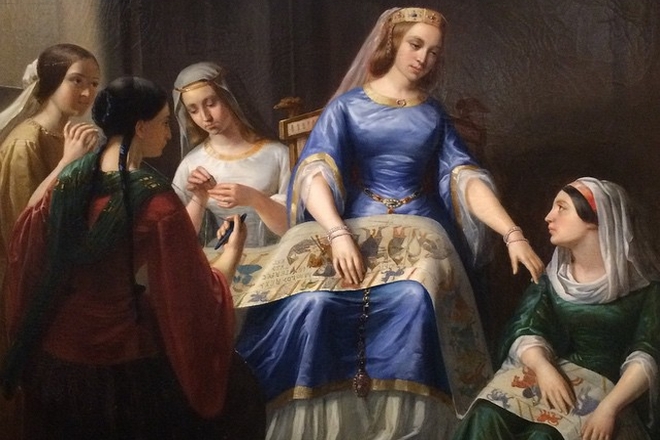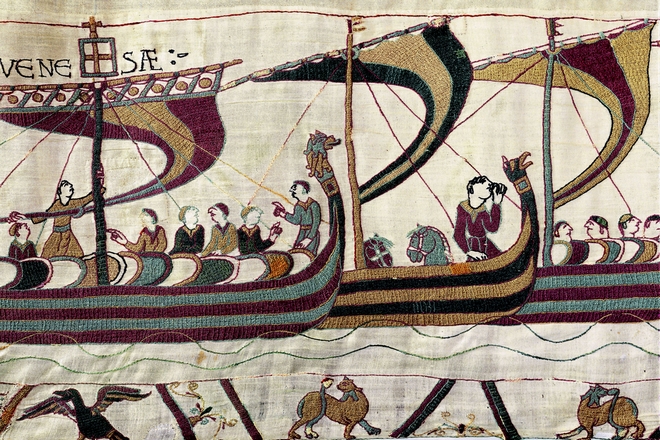
Share
Born in Falaise in 1027, he is the natural son of Robert the Magnificent, Duke of Normandy, and Arlette, daughter of a tanner. His illegitimate birth earned him the nickname of William the bastard. In 1035, when he was only 8 years old, he succeeded his father, who died after returning from his pilgrimage to Jerusalem. A period of unrest and plots weakened the duchy of Normandy but the young duke managed to impose his power. In 1047, the victory of Val-ès-Dune near Caen marks the first turning point of his reign. He takes the duchy firmly in hand and manages to ensure the fidelity of his vassals.
In 1064 in England, King Edward is still without heirs. Very attached to Normandy where he found refuge for 30 years, he naturally turns to William to predict his succession to the throne.
Betrayed by Harold, his vassal, William became King of England after the Battle of Hastings in 1066. He settled his power and founded a powerful Anglo-Norman kingdom. The Conqueror establishes an inventory of the men and wealth of the country (The Domesday Book) and creates many buildings including the Tower of London, erected with stones of Caen. Before dying in 1087, he settled his succession and entrusted to two of his sons the Duchy of Normandy and the Kingdom of England. William and his wife Mathilda both are burried in Caen in the abbeys they founded. The descendants of William reign over Normandy and England until 1204, date of the attachment of the duchy to the royal domain of France.

In 1050, he married Mathilda, a distant cousin, daughter of the Count of Flanders Baudouin V. Their union is forbidden by the Pope because of consanguinity. Nevertheless the wedding will be celebrated. To obtain the pardon of the Church, William agreed to found two abbeys in Caen, the Ladies’ Abbey and the Men’s Abbey. A long time known as the “Tapestry of Queen Mathilda”, the embroidery has been associated with this idea of a tearful “Penelope” embroidering while waiting for the return of her husband.

At the core of the Bayeux Tapestry’s narrative is William, the seventh Duke of Normandy, who ascended as the Conqueror after being crowned in England on Christmas Day of 1066. He became one of the most formidable monarchs in Western Europe during the Middle Ages. Born illegitimately in Falaise in 1027 to Robert the Magnificent, Duke of Normandy, he was commonly known as William the Bastard.
Following his acquisition of the English throne in 1066, William founded a mighty Anglo-Norman kingdom. The Conqueror commissioned The Domesday Book, an extensive census of the country’s populace and assets, and initiated the construction of numerous structures, including the Tower of London, built from Caen stone. Prior to his death in 1087, he arranged his succession, entrusting the Duchy of Normandy and the Kingdom of England to his two sons.
Matilda of Flanders married William, Duke of Normandy, in 1050 at Rouen (France). She was a distant cousin, the daughter of Count Baldwin V of Flanders. Their marriage was initially forbidden by the Pope due to consanguinity, yet it proceeded nonetheless. To receive the Church’s absolution, William consented to establish two abbeys in Caen: the Abbey of Sainte-Trinité (the Ladies’ Abbey) and the Abbey of Saint-Étienne (the Men’s Abbey). Often referred to as “Queen Matilda’s Tapestry,” the origin of the Bayeux Tapestry has been romantically linked to this notion of a grieving “Penelope,” embroidering in wait for her Duke husband’s return.